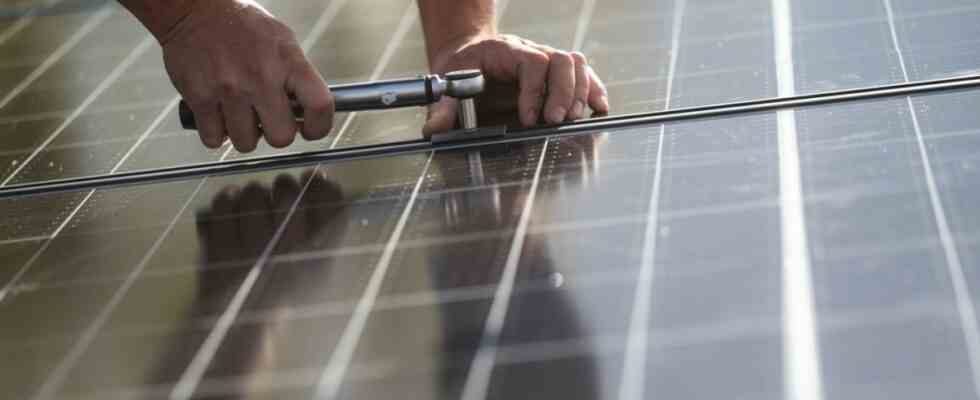The sky was gray on Thursday. It was drizzling in between. The solar yield in Unterschleißheim was correspondingly meager. In the quarter hour from 11:30 to 11:45 the 488 systems generated 194 kilowatt hours of electricity. According to the energy monitor of the Bayernwerk, the city covered five percent of its needs in these 15 minutes regionally and thus largely regeneratively. From the point of view of the new citizens’ initiative “Climate Neutral 2035” for Unterschleißheim and Oberschleißheim, which was founded on Wednesday evening in the community center, this value must rise quickly. And through a joint effort. “Basically, we are there to support politics and administration,” says Lena Gierl, one of the initiators.
According to Gierl, around 40 people came when the alliance was launched in the ballroom, based on the example of the initiative of the same name in Neubiberg. Among them were representatives of political parties and Agenda 21 groups as well as previously uninvolved citizens concerned about climate change. Five speakers presented what needs to be tackled, and working groups were set up to deal with photovoltaics, heat supply, wind power, waste and mobility. They also want to deal with the moor rewetting. ÖDP City Councilor Bernd Knatz was there. Despite his sympathy for the commitment, the long-time fighter for an energy transition admits that he is “a bit skeptical about the whole thing”. A lot will be done. Now a group is coming “out of nowhere”. There will be reviews again. He fears double structures and double work.
But it is also a new format that deliberately does not place itself politically and sees itself as a local force and partner for those responsible in the community. It is said that the main purpose of the lectures is to provide information. Two homepages for Unterschleißheim and Oberschleißheim are activated. Andrea Wörle, who is involved in the initiative, says that many factors could “be directly influenced by us in the communities through various measures, private, commercial and public”. That’s where you want to start: So no demonstrations like “Fridays for Future” and no blockades or high-profile protests like the group “Last Generation”.
However, the goal is ambitious to get by without fossil fuels by 2035. Among other things, the energy monitor that Bayernwerk offers for local authorities shows how difficult it is likely to be to achieve this. According to climate protection manager Petra Halbig, this online tool has recently been online for Unterschleißheim. Halfig admits that sustainable, local coverage of the electricity requirement of five percent is not enough. Sauerlach reached 79 percent, Brunnthal 73, Oberhaching 48 and Unterhaching 18.
But the municipalities are not comparable. Area communities with many single-family houses have an advantage when it comes to photovoltaics. Consumption by industry and commerce is at a different level in Unterschleißheim. Climate protection manager Halbig still considers the energy monitor to be a good tool for determining the current situation. It will soon be placed more prominently on the city’s website. By the way, this puts you ahead of Neubiberg. There, the climate-neutral initiative first promotes the community to participate in the monitoring.
The town hall and BI activists have been in contact for some time. Halbig looked for a conversation at the event in the community center and reported on another appointment shortly. She welcomes the initiative and considers the activists valuable multipliers. She considers their goal of becoming climate-neutral by 2035 to be extremely ambitious. The city itself is on the right track. Photovoltaics on public roofs are currently being massively expanded. Regarding the weak value of the energy monitor, Halbig says: “That will change very, very soon.”

